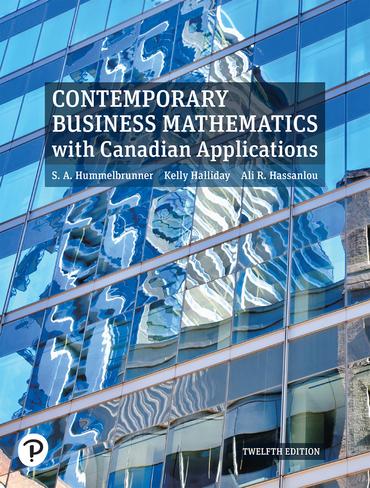Question
If A and B are independent events, with P(A) = 0.30 and P(B) = 0.50, then P(B|A) is 0.10.* True False If an experiment consists
If A and B are independent events, with P(A) = 0.30 and P(B) = 0.50, then P(B|A) is 0.10.*
True
False
If an experiment consists of five outcomes, with P(A1) = 0.10, P(A2) = 0.10, P(A3) = 0.30, and P(A4) = 0.25, then P(A5) = 0.30:*
True
False
If you roll a fair die 60 times, you should expect an odd number to appear 30 out of the 60 rolls*
True
False
Two events A and B are said to be independent if P(A and B) = P(A) + P(B).*
True
False
The classical approach to assigning probability can be applied for experiments that have equally likely outcomes.*
True
False
If an event does not occur, then its complement must occur.*
True
False
Two events A and B are said to be independent if P(A|B) = P(A).*
True
False
Based on past exam results in "Statistics-I" you estimate that there is an 83% chance of passing the exam. This is an example of the subjective approach to probability.*
True
False
When events are mutually exclusive, they can happen at the same time.*
True
False
When a fair die is rolled once, the sample space consists of the following six outcomes: 1, 2, 3, 4, 5, 6. Given this sample space, the event that an "even number" will appear is a simple event.*
True
False
The probability of the union of two mutually exclusive events A and B is P(A U B) = P(A) + P(B).*
True
False
When it is not reasonable to use the classical approach to assigning probabilities to the outcomes of an experiment, and there is no history of the outcomes, we have no alternative but to employ the subjective approach.*
True
False
Assume that A and B are independent events, with P(A) = 0.30 and P(B) = 0.50. The probability that both events will occur simultaneously is 0.80.*
True
False
Two events are said to be independent when the occurrence of one event has an effect on the probability that another will occur.*
True
False
If the event of interest is A, the probability that A will not occur is the complement of A.*
True
False
Given two events A and B, and that P(A) = 0.9 and P(B|A) = 0.5, then P(A and B) = 0.45.*
True
False
An experiment consists of tossing three fair (unbiased) coins simultaneously. This experiment has eight possible outcomes.*
True
False
Two events A and B are said to mutually exclusive if P(A) = P(B).*
True
False
Jim and John go to a coffee shop during their lunch break and toss a coin to see who will pay. The probability that John will pay three days in a row is 0.125.*
True
False
Probability refers to a number between 0 and 1 (inclusive), which expresses the chance that an event will occur.*
True
False
Step by Step Solution
There are 3 Steps involved in it
Step: 1

Get Instant Access to Expert-Tailored Solutions
See step-by-step solutions with expert insights and AI powered tools for academic success
Step: 2

Step: 3

Ace Your Homework with AI
Get the answers you need in no time with our AI-driven, step-by-step assistance
Get Started


